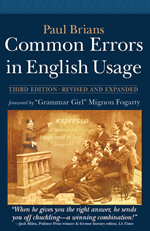In speech, people often lose track in the middle of a sentence and repeat “is” instead of saying “that”: “The problem with the conflict in the Balkans is, is the ethnic tensions seem exacerbated by everything we do.” This is just a nervous tic, worth being alert against when you’re speaking publicly.
However, when you begin a sentence with the phrase “What it is,” it’s normal, though awkward, to follow the phrase with another “is”: What it is, is a disaster.” This colloquialism is probably derived from expressions like this: “I’ll tell you what it is; it is a disaster.” In this case, each “is” has its own proper “it,” whereas the condensed version sounds like a verbal stumble. If you would rather avoid this sort of “is, is” you can avoid using “what it is” and say something simple like “It’s a disaster,” or “The point is that it’s a disaster.”
Of course, I suppose it all depends on what you think the meaning of “is” is.
BUY THE BOOK!
